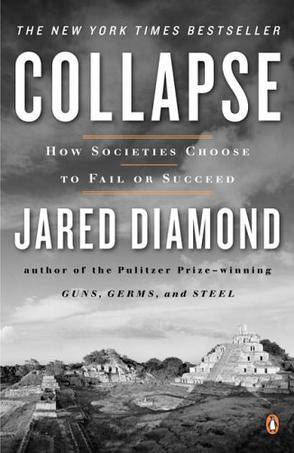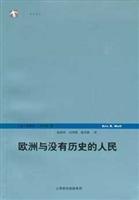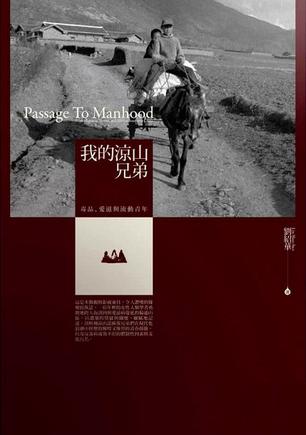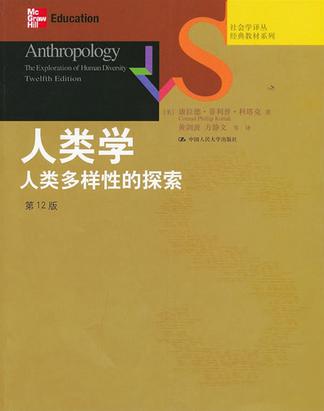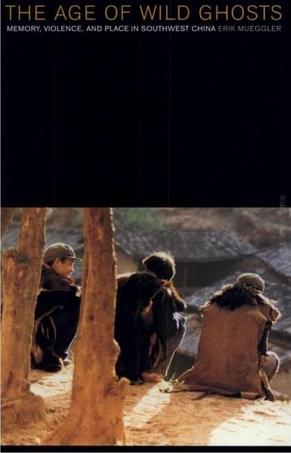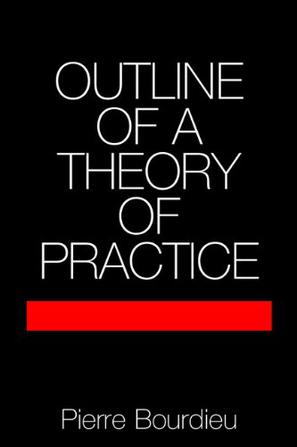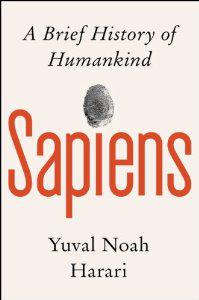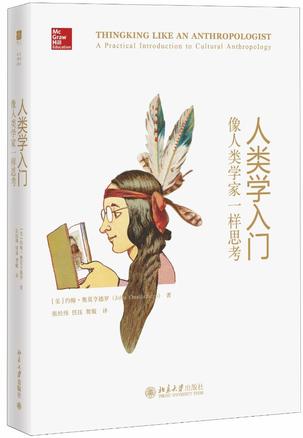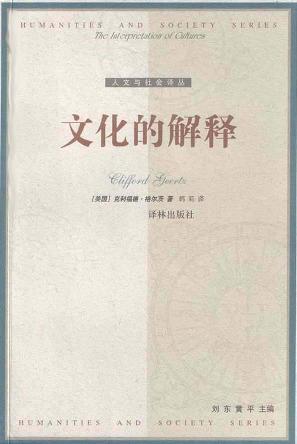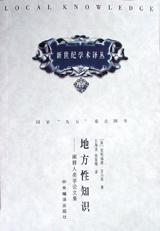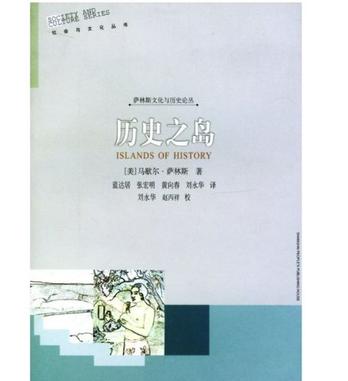欢迎来到相识电子书!
标签:anthropology
-
Guns, Germs, and Steel
Winner of the Pulitzer Prize, "Guns, Germs, and Steel" is a brilliant work answering the question of why the peoples of certain continents succeeded in invading other continents and conquering or displacing their peoples. This edition includes a new chapter on Japan and all-new illustrations drawn from the television series. Until around 11,000 BC, all peoples were still Stone Age hunter/gatherers. At that point, a great divide occurred in the rates that human societies evolved. In Eurasia, parts of the Americas, and Africa, farming became the prevailing mode of existence when indigenous wild plants and animals were domesticated by prehistoric planters and herders. As Jared Diamond vividly reveals, the very people who gained a head start in producing food would collide with preliterate cultures, shaping the modern world through conquest, displacement, and genocide.The paths that lead from scattered centers of food to broad bands of settlement had a great deal to do with climate and geography. But how did differences in societies arise? Why weren't native Australians, Americans, or Africans the ones to colonize Europe? Diamond dismantles pernicious racial theories tracing societal differences to biological differences. He assembles convincing evidence linking germs to domestication of animals, germs that Eurasians then spread in epidemic proportions in their voyages of discovery. In its sweep, "Guns, Germs and Steel" encompasses the rise of agriculture, technology, writing, government, and religion, providing a unifying theory of human history as intriguing as the histories of dinosaurs and glaciers. -
Collapse
Book Description In this fascinating book, Diamond seeks to understand the fates of past societies that collapsed for ecological reasons, combining the most important policy debate of this generation with the romance and mystery of lost worlds. Amazon.com Jared Diamond's Collapse: How Societies Choose to Fail or Succeed is the glass-half-empty follow-up to his Pulitzer Prize-winning Guns, Germs, and Steel. While Guns, Germs, and Steel explained the geographic and environmental reasons why some human populations have flourished, Collapse uses the same factors to examine why ancient societies, including the Anasazi of the American Southwest and the Viking colonies of Greenland, as well as modern ones such as Rwanda, have fallen apart. Not every collapse has an environmental origin, but an eco-meltdown is often the main catalyst, he argues, particularly when combined with society's response to (or disregard for) the coming disaster. Still, right from the outset of Collapse, the author makes clear that this is not a mere environmentalist's diatribe. He begins by setting the book's main question in the small communities of present-day Montana as they face a decline in living standards and a depletion of natural resources. Once-vital mines now leak toxins into the soil, while prion diseases infect some deer and elk and older hydroelectric dams have become decrepit. On all these issues, and particularly with the hot-button topic of logging and wildfires, Diamond writes with equanimity. Because he's addressing such significant issues within a vast span of time, Diamond can occasionally speak too briefly and assume too much, and at times his shorthand remarks may cause careful readers to raise an eyebrow. But in general, Diamond provides fine and well-reasoned historical examples, making the case that many times, economic and environmental concerns are one and the same. With Collapse, Diamond hopes to jog our collective memory to keep us from falling for false analogies or forgetting prior experiences, and thereby save us from potential devastations to come. While it might seem a stretch to use medieval Greenland and the Maya to convince a skeptic about the seriousness of global warming, it's exactly this type of cross-referencing that makes Collapse so compelling. --Jennifer Buckendorff From Publishers Weekly In his Pulitzer Prize–winning bestseller Guns, Germs, and Steel, geographer Diamond laid out a grand view of the organic roots of human civilizations in flora, fauna, climate and geology. That vision takes on apocalyptic overtones in this fascinating comparative study of societies that have, sometimes fatally, undermined their own ecological foundations. Diamond examines storied examples of human economic and social collapse, and even extinction, including Easter Island, classical Mayan civilization and the Greenland Norse. He explores patterns of population growth, overfarming, overgrazing and overhunting, often abetted by drought, cold, rigid social mores and warfare, that lead inexorably to vicious circles of deforestation, erosion and starvation prompted by the disappearance of plant and animal food sources. Extending his treatment to contemporary environmental trouble spots, from Montana to China to Australia, he finds today's global, technologically advanced civilization very far from solving the problems that plagued primitive, isolated communities in the remote past. At times Diamond comes close to a counsel of despair when contemplating the environmental havoc engulfing our rapidly industrializing planet, but he holds out hope at examples of sustainability from highland New Guinea's age-old but highly diverse and efficient agriculture to Japan's rigorous program of forest protection and, less convincingly, in recent green consumerism initiatives. Diamond is a brilliant expositor of everything from anthropology to zoology, providing a lucid background of scientific lore to support a stimulating, incisive historical account of these many declines and falls. Readers will find his book an enthralling, and disturbing, reminder of the indissoluble links that bind humans to nature. Photos. From Booklist Defining collapse as "extreme decline," the Pulitzer Prize-winning author of Guns, Germs, and Steel (1997), which posed questions about Western civilization's domination of much of the world, now examines the reverse side of that coin. Diamond ponders reasons why certain civilizations have collapsed. With an eye on the implications for the present and future, he bases his analysis on his newly phrased version of an old maxim about what history teaches: "The past offers us a rich database from which we can learn." Drawing examples from this database, from Polynesian culture on Easter Island to the Viking outposts in Greenland to the Mayan civilization in Central America, the author finds "the fundamental pattern of catastrophe" that is apparent in these populations that once flourished and then collapsed. The template he holds up is a construct based on five factors, including environmental damage, climate change, and hostile neighbors. In addition, Diamond casts his critical but acute and inclusive gaze on the issue of why civilizations fail to see collapse coming. A thought-provoking book containing not a single page of dense prose. Expect demand from civic- and history-minded readers. Brad Hooper From School Library Journal Adult/High School–This powerful call to action should be read by all high school students. Diamond eloquently and persuasively describes the environmental and social problems that led to the collapse of previous civilizations and threaten us today. The book's organization makes researching particular regions or types of damage accessible. Unfamiliar words are defined, and mention of a place or issue that has been described in greater detail elsewhere includes relevant page numbers. Students may become impatient with the folksy Montana fishing stories in part one, but once the fascinating account of the vanished civilizations begins, readers are taken on an extraordinary journey. Using the Mayan empire, Easter Island, the Anasazi, and other examples, the author shows how a combination of environmental factors such as habitat destruction, the loss of biodiversity, and degradation of the soil caused complex, flourishing societies to suddenly disintegrate. Modern societies are divided into those that have begun to collapse, such as Rwanda and Haiti; those whose conservation policies have helped to avert disaster, such as Iceland and Japan; and those currently dealing with massive problems, such as Australia and China. Diamond is a cautious optimist. Some of his most compelling stories show how two groups of people sharing the same land, such as the Norse and Inuit in Greenland, can end up in completely different situations depending on how they address their problems. The solutions discussed are of vital importance: how societies respond to environmental degradation will determine how teens will live their adult lives. As Diamond points out, in a collapsing civilization, being rich just means being the last to starve. Black-and-white photos are included. –Kathy Tewell, Fairfax County Public Library, VA Book Dimension length: (cm)21.7 width:(cm)14 -
欧洲与没有历史的人民
本书选取1400年这个时间作为究的参照点在那结点上,我们可以欣喜地看到欧洲作为一种新变化趋势的心力量迅速崛起,欧洲大陆以外的其他不同来源的社会组和族群逐被卷入到这个全球性联结的整体中。作者秉承了马克思关于生产方式和劳动价值学说的基本观念,以生产方式的变化以及在各大洲之间扩展为核心,考察了不同文化、政治和社会环境的人群对这一巨大变化所做出的回应。 -
如何做田野笔记
近几年,许多人类学家开始强调写作的重要性。而众所周知,民族志写作的起点和基础是研究者的田野笔记。那么,如何做田野笔记呢? 为此,三位具有丰富田野实践和教学经验的人类学家,给出了一系列实用而又指导性的建议。本书通过大量的正在撰写的、“未完成的”田野笔记实例,考察了田野研究者如何将亲身经历和观察写成田野笔记的过程,讨论如何运用田野笔记来讲述民族志故事的方法,以及帮助研究者基于田野笔记撰写民族志的关键步骤。 本书致力于提出一套实用的田野笔记写作指导,以帮助社会学、人类学、民俗学、口述历史学、教育学等学科的本科生和研究生,因为田野研究和人类学方法在以上学科中都占有十分突出的地位;另一方面,对于政治学、商业管理、传播、社会福利及公共卫生等学科,田野研究和民族志也可以作为次一级的辅助研究方法。 《如何做田野笔记》系美国当代知名人类学家罗伯特·埃默森等撰写的一部有关人类学研究专著。田野调查是当代文化人类学研究的重要环节,而其中的关键之处,就是如何作田野笔记。此书结集的数位人类学家的经验谈,对此项工作作了详尽、清晰的阐述,也是该学科基础方法的指导之作。 -
我的涼山兄弟
歷經十年、長達二十個月的田野調查,一位年輕女性人類學者,勇敢跨入海洛因與愛滋病蔓延的偏遠山區,紀錄涼山諾蘇族兄弟在現代化浪潮中,輝煌又慘烈的青春探險 。見證了現代與傳統、全球與在地、生命與死亡的交織辯證。在開卷獎年度好書《柬埔寨旅人》的自序中,劉紹華留下一段文字:「二○○ ○年,我對所謂第三世界國際發展的疑問大到無法以我當時既有的知識解套,決定繼續我的人類學夢想,並期待圓夢的同時我的困惑能得到解答。」這是她離開金邊高等研究院人類學愛滋病研究計畫實習工作時的深切自我期許。如今呈現眼前的《我的涼山兄弟》,正是她十年鑄一劍的心血結晶,也是身為公共知識分子的具體實踐。 本書以現代性與全球化為時代背景和理論視野,將海洛因與愛滋比喻為諾蘇男性的流動成年禮。奠基於美國哥倫比亞大學醫療人類學的完整紮實訓練,歷經十年、長達二十個月的深入在地田野調查,作者生動鮮活地呈現出諾蘇流動青年與吸毒者的生命經驗,將之與中國在過去一世紀的鉅變中所經歷的多元現代性、社會韌性,以及個人生命憧憬交織在一起,並從中揭露少數民族文化的延續與斷裂。 這部兼具民族誌知性與報導文學感性的動人作品,銘誌了一個可能即將灰飛煙滅的時代紀錄。在涼山徹底隱沒於現代性洪流之前,惟願諾蘇兄弟的生命能廣被認識,這是作者書寫始終如一的初衷。 本書英文版榮獲第一屆中央研究院人文及社會科學學術性專書獎。 -
人类学
康拉德·菲利普·科塔克编著的《人类学:人类多样性的探索(第12版)》作为国外高版本的最经典的人类学教材,从四个分支角度系统地介绍了人类学的基本内容。全书的组织和安排旨在既涵盖人类学的核心概念和基本原理,也讨论时下重要的和有趣的闻题,并通过将生物、社会、文化、语言和历史结合起来的方法,使读者对“作为人类意味着什么”这一命题有更充分的理解。同时,基于大量田野研究的结论和案例更加丰富了《人类学:人类多样性的探索(第12版)》的内容,在教学方而非常易于使用,可以满足广大师生各种教学和学习的需要。 -
安达曼岛人
本书是拉德克里夫—布朗在1906—1908年在安达曼群岛考察的基础上写成的一部民族志著作。这部著作在方法论上第一次系统地尝试了英国现代社会人类学“特定地域的深入研究”方法,从而与马林诺夫斯基的《西太平洋的航海者》共同奠定了现代社会人类学田野工作和民族志写作的基本模式。 全书分章探讨了安达曼岛人社会组织、仪式习俗、宗教和巫术信仰。其中,仪式和信仰的描述和解释占了最大的篇幅。作者依循法国社会学家涂尔干在《宗教生活的基本形式》一书对“社会”的理解,既反对传统的、历史学角度的民族志写法,又拒绝个体心理学的视角。作者认为,社论进一个独特的事实,它凌驾于个体,无影无形,所以必须通过各种制度把自己落到“实处”,这就是一个民族看似无关的各种“文化事项”的使命,也就是所谓“功能”。 本书是功能学派的代表作,尤其可以作为布朗本人注重结构分析的人类学思想的代表作。与马氏的《航海者》参照阅读,读者可以比较出功能学派内部两位大师各自学术取向的差异,进而间接对英国社会人类学和法国涂尔干等大陆社会学家的复杂关联有所了解。 -
階序人I:卡斯特體系及其衍生現象
英國人類學家李區(Leach)稱本書是印度卡斯特研究史上的空前鉅構,而美國人類學家坦拜雅(Tambiah)稱本書融攝綜合了前人對印度研究的成果。然而本書所提出的「階序」這理念,實充分體現出「文化」的震撼:一方面揭明了印度這古老文明的基要理念,另方面則暗指西方近代那「平等」理念的局限。是以本書對漢學研究、比較文明研究,都有其不可抹殺的參考價值。初次閱讀宜從本書的附錄著手。 -
The Age of Wild Ghosts
In Erik Mueggler's powerful and imaginative ethnography, a rural minority community in the mountains of Southwest China struggles to find its place at the end of a century of violence and at the margins of a nation-state. Here, people describe the present age, beginning with the Great Leap Famine of 1958-1960 and continuing through the 1990s, as "the age of wild ghosts." Their stories of this age converge on a dream of community--a bad dream, embodied in the life, death, and reawakening of a single institution: a rotating headman-ship system that expired violently under the Maoist regime. Displaying a sensitive understanding of both Chinese and the Tibeto-Burman language spoken in this region, Mueggler explores memories of this institution, including the rituals and poetics that once surrounded it and the bitter conflicts that now haunt it.To exorcise "wild ghosts," he shows, is nothing less than to imagine the state and its power, to trace the responsibility for violence to its morally ambiguous origins, and to enunciate calls for justice and articulate longings for reconciliation. -
努尔人
作者通过对一个没有类似于西方国家制度的非洲部落的田野研究,对规范了一代人类学者从事社会和文化研究的工作范式提出了一个挑战性的问题,即在一个没有国家和政府统治的部落中,社会是如何组织起来的?这本著作被认为真正起到了人类学认识范式更新的作用。 -
The Savage Mind (Nature of Human Society)
"Every word, like a sacred object, has its place. No "precis" is possible. This extraordinary book must be read."--Edmund Carpenter, "New York Times Book Review " "No outline is possible; I can only say that reading this book is a most exciting intellectual exercise in which dialectic, wit, and imagination combine to stimulate and provoke at every page."--Edmund Leach, "Man " "Levi-Strauss's books are tough: very scholarly, very dense, very rapid in argument. But once you have mastered him, human history can never be the same, nor indeed can one's view of contemporary society. And his latest book, "The Savage Mind," is his most comprehensive and certainly his most profound. Everyone interested in the history of ideas "must" read it; everyone interested in human institutions "should "read it."--J. H. Plumb, "Saturday Review" "A constantly stimulating, informative and suggestive intellectual challenge."--Geoffrey Gorer, "The Observer," London -
Outline of a Theory of Practice
Outline of a Theory of Practice is recognized as a major theoretical text on the foundations of anthropology and sociology. Pierre Bourdieu, a distinguished French anthropologist, develops a theory of practice which is simultaneously a critique of the methods and postures of social science and a general account of how human action should be understood. With his central concept of the habitus, the principle which negotiates between objective structures and practices, Bourdieu is able to transcend the dichotomies which have shaped theoretical thinking about the social world. The author draws on his fieldwork in Kabylia (Algeria) to illustrate his theoretical propositions. With detailed study of matrimonial strategies and the role of rite and myth, he analyses the dialectical process of the 'incorporation of structures' and the objectification of habitus, whereby social formations tend to reproduce themselves. A rigorous consistent materialist approach lays the foundations for a theory of symbolic capital and, through analysis of the different modes of domination, a theory of symbolic power. -
Sapiens: A Brief History of Humankind
100,000 years ago, at least six human species inhabited the earth. Today there is just one. Us. Homo sapiens. How did our species succeed in the battle for dominance? Why did our foraging ancestors come together to create cities and kingdoms? How did we come to believe in gods, nations and human rights; to trust money, books and laws; and to be enslaved by bureaucracy, timetables and consumerism? And what will our world be like in the millennia to come? In Sapiens, Dr Yuval Noah Harari spans the whole of human history, from the very first humans to walk the earth to the radical - and sometimes devastating - breakthroughs of the Cognitive, Agricultural and Scientific Revolutions. Drawing on insights from biology, anthropology, palaeontology and economics, he explores how the currents of history have shaped our human societies, the animals and plants around us, and even our personalities. Have we become happier as history has unfolded? Can we ever free our behaviour from the heritage of our ancestors? And what, if anything, can we do to influence the course of the centuries to come? Bold, wide-ranging and provocative, Sapiens challenges everything we thought we knew about being human: our thoughts, our actions, our power ... and our future. -
人类学入门
在现今这个多元世界中,学习文化人类学能让所有学生洞悉、探索我们置身其中的千差万别的世界。本书将人类学家的思考方式归结为11个问题,每章都以作者从事人类学研究的亲身经历开篇,并在文中进行详细剖析,生动地讲述了人类学的主要内容,有助于学生较快地掌握人类学研究人类行为和观念的 方法,学会像人类学家一样思考自己在现实生活中遇到的问题。 这本激动人心的新书引出了文化人类学思考方式的核心方式,并通过十一个问题让它们浅显易懂,告诉我们如何通过这些问题提高自己的认识水平。每个简短章节围绕一个问题展开,并附有练习和课堂演示,是一本上佳的人类学通识教科书。 -
原始社会的结构与功能
《原始社会的结构与功能》主要内容:中国从西方引进人类学是客观形势使然。1840年前的中国曾自诩为“天下”:它的语文就是世界语,它的经典就是天经地义,它的文人就是世界师表。那时的中国多的是阶序观念和自我中心意识,缺的是主权平等和文化相对理念。 -
文化的解释
简介: 格尔茨这本开拓性的著作,美国社会学协会1974年索罗金奖获奖作品,有助于为整个一代人类学家界定其领域的终极目的。 ——《出版家周刊》 前 言 当一位人类学家在殷切的出版商的催促下,着手收集他的某些论文,以便对他自离开研究生院后十五年中的工作作一个回顾性的展示时,面临着两个困难的抉择:收集哪些论文以及如何以诚实的态度来对待收集进来的论文。我们所有这些为社会科学杂志写文章的人都有一本自己想像中的非书之书(nonbook),而越来越多的人也正在把它们出版出来。我们所有的人都设想过去自己写的东西现在会写得更好,而且准备好了要自己修改而决不让编辑改动。想要从自己的行文中发现精巧的构思可能会同想在自己的生活中有所发现一样让人失望;事后(post facto)编一个进去——“这就是我过去想要说的意思”——是一种强烈的诱惑。 面对第一个抉择,我决定只收入那些与文化概念有直接而明显关系的论文。事实上,这些论文的大多数不是理论探求而是经验研究,因为当我离社会生活的直接体验太远时,我就会感到不舒服。但是所有的论文基本上都是通过一个又一个的实例,来提出一个独特的——别人也许会认为是奇怪的观点来阐明什么是文化,它在社会生活中扮演了什么角色,以及应该如何恰当地研究它。虽然重新定义文化是我作为人类学家最持久的兴趣,但是我也在经济发展、社会组织、比较史学和文化生态学领域里做了一些拓展——为了避免离题太远,本书就没有反映这些关注。因而,我希望,这一组论文看起来就像是一篇通过一系列具体分析而得来的论文,不要仅仅是一种“尔后我写道……”这样的对有些漂泊的职业生涯的回顾。这本书要进行论证。 第二个抉择不大容易处理。一般来说,我对发表过的文章采取一种stare decisis(维持原样)的态度,即使仅仅是因为如果这些论文需要很大的修改,那就完全不应该重印它们,而应代之以能纠正错误的全新论文,也应这么做。况且,把改变了的观点写进早先的著作中来纠正自己的错误判断,在我看来不太光明磊落。这样做会模糊了选编自己的论文时首先想揭示的思想发展进程。 不过,即便如此,虽然争论的实质不受严重影响,但要是对原文一字不改,传达的就是过时的信息或因与现在已淡化的一系列事件联系过于紧密而削弱了现在还有效的讨论,在这种情况下,似乎还是有正当理由,回过头去做一些校订。 在后面选收的论文中,有两处与我上面的考虑有关,因而我就对原来写的东西做了些修改。第一处是第二编中的两篇关于文化与生物进化的论文,原文给出的化石年代已被确切地替代了。这些年代,一般说是向前推了,这一变化基本上未触动我的核心论证,我认为引入比较新的测算没有坏处。在考古学已经发现四百万或五百万年前的化石后,再说南方古猿(Australopithecines )可以追溯至一百万年前就没有多少意思了。第二处与第四编第十章《整合式革命》有关,自这篇论文在本世纪六十年代写作以来,新国家历史的潮流——如果它应该这么称呼的话——已使其中的一些内容读起来很古怪。既然纳赛尔已经去世,巴基斯坦已经分裂,尼日利亚已经非封建化,共产党已从印度尼西亚的政治舞台上消失,如果写得仿佛这些事件没有发生过似的,会给讨论带来不真实的感觉,而且即使现在不是尼赫鲁而是尼赫鲁的女儿在领导印度,马来亚共和国已经扩大为马来西亚联邦,这个讨论我认为还有意义的。因此我在这篇论文中做了两类修改。第一,我变换了时态,引入了从句,添加了一两处脚注等等,从而在使论文的正文读起来不太像过去的十年没有出现过一样。但是我没有为了增强论证而改变任何实质性的东西。第二,我给每一个历史实例都增加了一段内容,概括自这篇论文写作以来与之有关的发展——而且清楚地与实例正文分开,以此来明确指出,假如有任何事件发生,它的发展显示出在这篇论文中以早先的事件为根据的讨论仍然与剔除过时事件( Rip Van Winkle)的影响有关。除了一些印刷和语法上的小更正(以及为索引风格一致所做的修改),本书的其他内容基本上没变。 不过,我增加了新的一章,即第一章,尽可能概括地表明我现在采取的立场。因为各章讨论的观点跨越十五个年头,在引论性的第一章中讨论某些事情的方式的确与出现在重印的某些其他章中的方式有些不同。我早先的一些关注——比如功能主义——现在在我的思想里已不太突出;而一些后来的关注——比如符号学——现在更突出了。但在我看来,这些论文中的思想走向是相对连贯的——它们的排列是按逻辑顺序而非年月顺序,而第一章代表的是一种努力,要更清楚、更系统地说明这一思想走向是什么:总之,努力说出我一直在说的东西。 我删掉了论文中原有的所有致谢,那些帮助过我的人知道他们帮助过我,并且也知道给我的帮助有多么大。我只能希望他们至今还知道我也知道这些帮助。而我不再忙乱地提及他们,代之以对三个出色的学术机构的真诚的感谢:哈佛大学社会关系系,我在那里受过训练;芝加哥大学人类学系,我在那里教了十年书;普林斯顿高等学术研究所,我现在在那里工作。在美国大学系统被抨击为不合潮流或日益恶化的时刻,我只能说,它 一直是一份拯救我的礼物。 (克利福德·格尔茨 一九七三年于普林斯顿) -
地方性知识
吉尔兹是美国著名文化人类学家,他的论文集《地方性知识》在西方文化学理论界有着极大的影响,堪称经典和理论楷模,他同时被称为阐释人类学大师和开山者,划时代的理论大师。《地方性知识》的命题旨在认知的具体性、穿透性和阐释性,作为吉尔兹成熟期的作品,这本论文集大致集结了吉尔兹三个方面的命题的文章,第一是取其符号性强、文化认知意蕴较为深厚的命题,第二是取赋深度层次化,以便展示阐释学分析、论辩之长的命题,第三则 -
野性的思维
作者在本书的论证中除人类学外,还涉及到了语言学、逻辑学、社会学、心理学、美学、历史学、哲学等各个方面的问题,如事物的命名与分类方式,结构与事件的关系,自然与文化的关系,个体名称与一般名称关系,艺术的形式与内容,历史概念的辨析等等。论述的方式也别具一格,其中哲学的、科学的、艺术的、文学的语言往往交相并用。此外,尽管我们会在本书文句中不时遇到借自控制论、信息论、逻辑代数、结构语言学等学科中的术语,但它绝不是一本具有自然科学风格的人类学著作,而是一本具有哲学意趣的理论人类学专著。 -
历史之岛
《历史之岛》以夏威夷群岛历史史料为根基,以“库克船长”和“毛利人的英雄人物霍尼海克的神话”等为例,阐述了其历史文化、社会变革、政治制度等。《历史之岛》忠实、详尽地考察了南太平洋诸岛的土著文化:毛利人、斐济人、波利尼西亚人的生活、社会、王权、宗教、禁忌等观念与现象,并具体描述了欧洲入侵者进入夏威夷诸岛后所发生的抵抗、冲突、交往、贸易、政治等各重大事件。
热门标签
下载排行榜
- 1 梦的解析:最佳译本
- 2 李鸿章全传
- 3 淡定的智慧
- 4 心理操控术
- 5 哈佛口才课
- 6 俗世奇人
- 7 日瓦戈医生
- 8 笑死你的逻辑学
- 9 历史老师没教过的历史
- 10 1分钟和陌生人成为朋友


